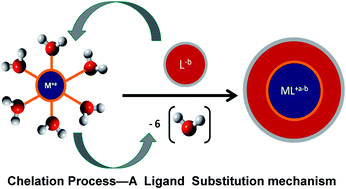Chelation technology: a promising green approach for resource management and waste minimization
Abstract
Green chemical engineering recognises the concept of developing innovative environmentally benign technologies to protect human health and ecosystems. In order to explore this concept for minimizing industrial waste and for reducing the environmental impact of hazardous chemicals, new greener approaches need to be adopted for the extraction of heavy metals from industrial waste. In this review, a range of conventional processes and new green approaches employed for metal extraction are discussed in brief. Chelation technology, a modern research trend, has shown its potential to develop sustainable technology for metal extraction from various metal-contaminated sites. However, the interaction mechanism of ligands with metals and the ecotoxicological risk associated with the increased bioavailability of heavy metals due to the formation of metal–chelant complexes is still not sufficiently explicated in the literature. Therefore, a need was felt to provide a comprehensive state-of–the-art review of all aspects associated with chelation technology to promote this process as a green chemical engineering approach. This article elucidates the mechanism and thermodynamics associated with metal–ligand complexation in order to have a better understanding of the metal extraction process. The effects of various process parameters on the formation and stability of complexes have been elaborately discussed with respect to optimizing the chelation efficiency. The non-biodegradable attribute of ligands is another important aspect which is currently of concern. Therefore, biotechnological approaches and computational tools have been assessed in this review to illustrate the possibility of ligand degradation, which will help the readers to look for new environmentally safe mobilizing agents. In addition, emerging trends and opportunities in the field of chelation technology have been summarized and the diverse applicability of chelation technology in metal extraction from contaminated sites has also been reviewed.


 Please wait while we load your content...
Please wait while we load your content...